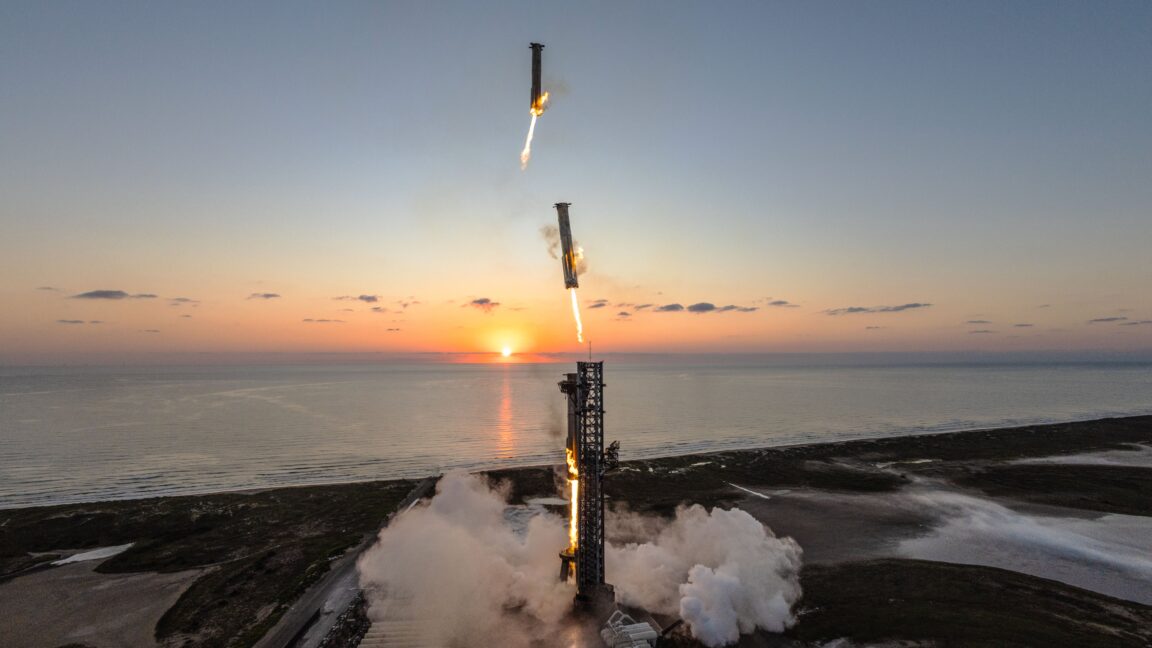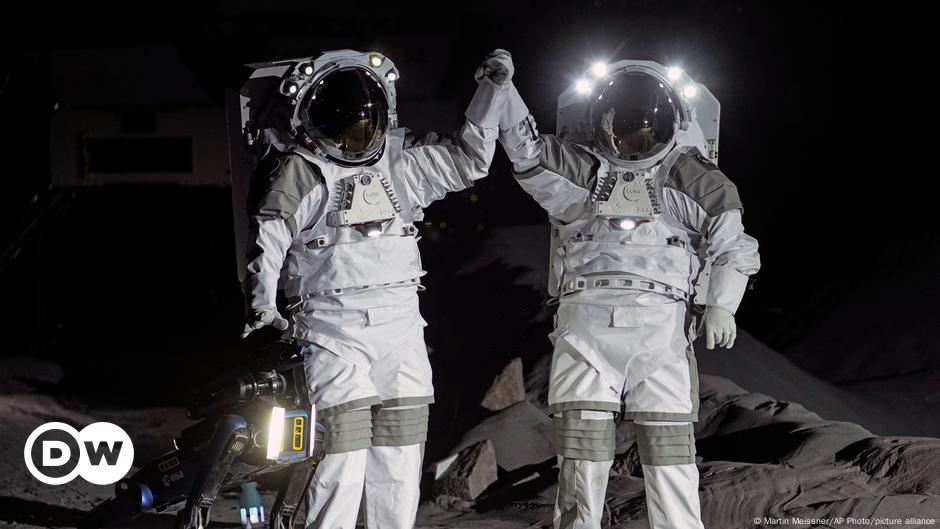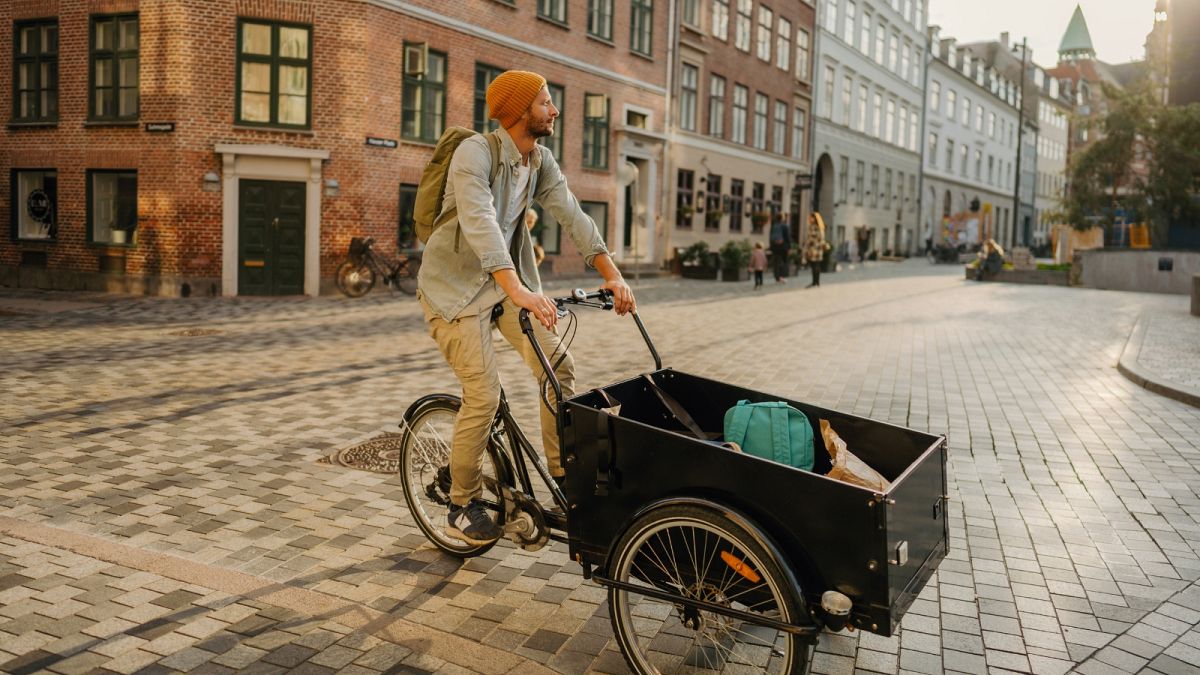Stanford researchers hope new technique will flip lymphoma protein’s normal action — from preventing cell death to triggering it.

As remarkable as SpaceX’s Starship rocket catch was, it represents but a single step on a long path to the Moon for NASA, and on to Mars.

The warming climate in polar regions may significantly disrupt ocean circulation patterns, a new study indicates. Scientists discovered that in the distant past, growing inflows of freshwater from melting Arctic sea-ice into the Nordic Seas likely significantly affected ocean circulation, sending te...

"It has also become more erratic and unpredictable," she told the newspaper, "and we are facing growing problems of either too much or too little water."
Climate change disturbs the rainfall distribution patterns, leading to extreme rain in some areas and less in others. It's a very complex system and there are a lot of variables evolved. One example is changing wind patterns that creates high pressure regions that we see during heatwaves.
The world's rivers are drying up at rates faster than ever before thanks to climate change — and last year was the world on record.

The study also addressed the wider implications of these findings. CK1δ plays a role in several important processes beyond circadian rhythms, including cell division, cancer development, and certain neurodegenerative diseases. By better understanding how CK1δ's activity is regulated, scientists could open new avenues for treating not just circadian rhythm disorders but also a range of conditions.
Scientists have discovered a revolutionary way to put an end to jet lag by uncovering the secret at the tail end of Casein Kinase 1 delta (CK1δ), a protein that regulates our body clock. This breakthrough, achieved by researchers from Duke-NUS Medical School and the University of California, Santa C...

In a new Nature Communications study, researchers propose a new method for hydrogen storage using existing pipes located at the bottom of lakes and reservoirs.

A team of engineers at Nanjing University, working with a pair of colleagues from the University of California, Berkeley, has developed a new way to extract lithium from briny water.

Getting to the moon takes a lot of small steps, like Europe's new LUNA training facility. But it's not there yet. Next step: a moon gravity simulator.

Tesla's main competitor is envisioning a bright future for electric vehicles with batteries that feature a solid-state electrolyte, the next frontier in the battle for EV dominance.
Three Earth plants will soon make a new home on the lunar surface.

Glioblastoma is a brain cancer with very poor survival outcomes. Most drugs can't cross the blood-brain barrier, which means that unlike other cancers, there just aren't that many therapies available for brain tumors.

Adults with hemophilia B saw their number of bleeding episodes drop by an average of 71% after a single infusion of gene therapy, according to the results of an international Phase III clinical trial published in the New England Journal of Medicine by researchers from the University of Pennsylvania ...

Deposits of rare earth metals, the crucial ingredients in electric vehicles and wind turbines, could be present in ancient volcanoes across the world

A research group has developed an innovative method for the biofortification of leaves and other green plant tissues, increasing their content of healthy substances such as beta-carotene, the main precursor of vitamin A in the human diet.

More and more climate scientists are supporting experiments to cool Earth by altering the stratosphere or the ocean

The world's oceans are close to becoming too acidic to properly sustain marine life or help stabilize the climate, a new report said on Monday.

T cells are our first line of defense against cancer, but the battle tends to exhaust them. Now, scientists have found a way to give them extra “batteries” to keep them fighting longer, with promising early results in mice.

[Opinion] Major moves in recent weeks show that LCD's days are numbered. But it's great timing for semiconductor makers.

There's a similar project that would supply power from Australia-Asia that spans 4,600 km when completed. But such big projects could easily be caught up in various delays, and it's a problem if a country is too dependent on a single power link. Self-reliant renewable energy production definitely seems more secure.
It'd be great if AI is powered entirely by renewables, but how trustworthy is that target?
Companies and politicians are known to drag their feet switching to renewables or use greenwashing to show they care more about climate than they actually do.
Quoting from another article:
The researchers said, unfortunately, it would be too dim to see with the naked eye. According to the NASA JPL, 2024 PT5 has an absolute magnitude of 27.6, which is very dim and won’t be visible through most amateur telescopes.
Oops.
Archive link: https://archive.ph/k1qZ9
Some regions may see slower changes than others in the short term. Long term, all will be affected.
The 72-cell panels, comprised of Oxford PV’s proprietary perovskite-on-silicon solar cells, can produce up to 20% more energy than a standard silicon panel.
Oxford PV has been developing and working to commercialise this technology since 2014, with a recent module efficiency record of 26.9%
Summary:
Researchers at the University of Saskatchewan are using AI to develop a more efficient method for producing green hydrogen. The researchers have been searching for the optimal alloy or metal combination to act as a catalyst, aiming to make the reaction more efficient and affordable. The AI program analyzed over 36,000 metal oxide combinations through virtual simulations and tested the top candidate in the lab. The recommended alloy of ruthenium, chromium, and titanium emerged as the clear winner, demonstrating 20 times better stability and durability than the benchmark metal.
Yes, their data does count battery storage as operating capacity. Isn't that a useful metric though, since batteries will complement the grid during solar downtime?
There are around 100,000 EVs in Ethiopia so far.
The Ethiopian government estimates that number will more than quadruple by 2032. That’s largely because the national government took the extraordinary step earlier this year of banning the import of all gas-powered passenger vehicles — becoming the first nation in the world to do so.
Thanks for informing
This feels so true at this point..
I get creeped out even answering to an AI bot screening phone support calls. Having video AI interviewer is a whole another level of creep.
Ah, got it.
Here's another source:
https://www.washingtonpost.com/business/2024/08/21/ford-electric-vehicles-hybrids/
Probably means the solutions to plastic crap are wild/crazy/unconventional ideas implying "loony".
We had a technical issue that impacted the federation with other instances. It's resolved now so there's more visibility.
Right? AI chatbots are so bad with hallucinations. As a programmer I can usually spot the inaccurate code chatbot is spewing, but these kids won't be able to spot the inaccuracy unless there's very strict quality control..which would require human teachers anyway.
I hope never lol


